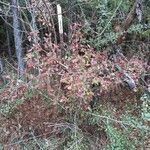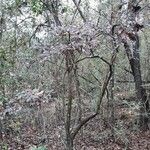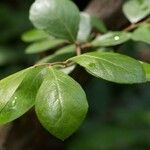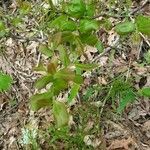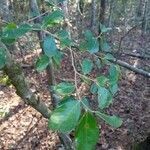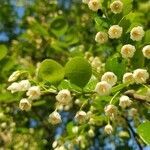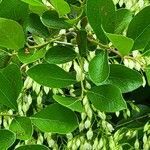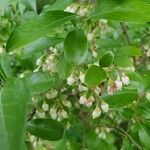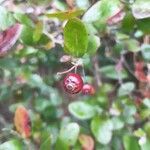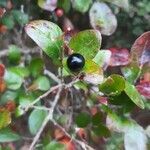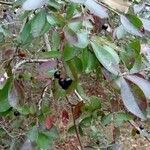Divergently branched shrub to 5 m; lvs firm, deciduous, oblanceolate to obovate, 2–5 cm, entire, narrowed to a short petiole, shining above, dull and sometimes puberulent beneath; fls few in a short raceme or solitary, on pedicels 6–10 mm; cor white, obovoid, 4.5–5.5 mm, constricted at the throat; stamens included; anthers with 2 divergent dorsal spurs 1–1.2 mm and erect terminal tubules 1.5 mm; style slightly exsert; fr black, inedible. Dry, sandy or rocky woods; se. Va. to Ky., s. Ind., Mo., and se. Kans., s. to Fla. and Tex. May, June. (Batodendron a.)
Shrubs or trees, trunks to 35 cm diam. at breast height; twigs of current season reddish green, glabrous, glaucous, or glandular-hairy, not verrucose. Leaf blades pale green, glaucous, obovate to oblong, 22-40 × 12-20 mm, coriaceous, surfaces glabrous or glandular-hairy abaxially, glabrous and lustrous adaxially. Inflorescence bracts ± persistent. Pedicels slender, 0.8-1.2 cm. Flowers: calyx 21-29 × 7-13 mm; corolla white, 3-5 mm; filaments ciliate. Berries shiny black, 7-9 mm diam. 2n = 24.
